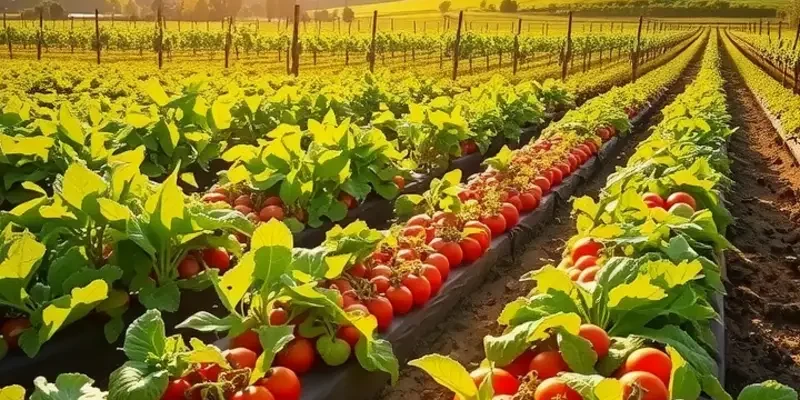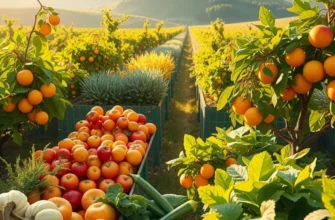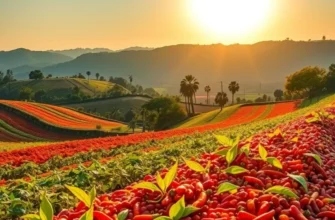Culinary traditions during festivals are rich with meaning, transforming ordinary ingredients into symbols of culture and history. From joyous celebrations to solemn rituals, every dish has a story to tell. Exploring these festivals reveals how food brings communities together, weaving a tapestry of shared meanings, beliefs, and customs that deepen our appreciation for global cuisines.
Feasting for Fertility: The Use of Food in Springtime Festivals

In the tapestry of global celebrations, spring stands out as a season of rebirth and renewal. Many cultures frame these rites of passage through food, transforming seasonal ingredients into symbols of fertility and growth. These edible representations not only satiate hunger but also bind communities in shared narratives of rejuvenation.
Eggs, across various traditions, are quintessential symbols of birth and renewal. Their encapsulated life force mirrors the burgeoning vitality of spring. In many European cultures, decorating eggs—tracing back to pre-Christian lore—heralds this cycle of renewal, with each design carrying specific intentions and blessings for the coming year. Meanwhile, some Middle Eastern cultures incorporate eggs into their New Year celebrations, embedding them in festive breads or displaying them as harbingers of prosperity and life.
Similarly, grains have long represented fertility due to their foundational role in sustenance and growth. In India, for example, Baisakhi marks the harvest of rabi crops. Celebrated with a rich repertoire of dishes like kadah prasad (a sweet made of wheat), the festival honors the land’s abundance and those who cultivate it. Grains become symbols of life’s continuity, feeding both body and spirit.
Herbs and greens, flourishing with the first warm breezes, also embody renewal. In Greek Easter celebrations, aromatic herbs such as dill or fennel find their place in traditional pies and breads, stimulating the senses and symbolizing the return of life. In sum, they act as culinary conduits to the natural world, inviting vitality into every bite.
Elsewhere, the symbolism of fruits underscores fertility and vitality in springtime feasts. As cherries and apricots blossom in countries like Japan, they are celebrated in hanami festivals, where people gather under blooming trees. These gatherings extend beyond the floral beauty to include feasts that celebrate the fullness of life and the hope for bountiful harvests.
The culinary narrative of spring is further enriched by the use of honey, a symbol of sweetness and the seamless flow of life. In Jewish Passover, ‘charoset,’ a sweet paste made from apples, nuts, and honey, commemorates liberation and new beginnings. Honey reminds participants of the land’s fertility and promises of a fruitful future.
In weaving together these rich traditions, it becomes evident how deeply imbued every grain, herb, and fruit is with meaning in the mosaic of springtime festivals. Each ingredient’s role transcends mere sustenance to become an integral part of stories celebrating life’s renewal across ages and cultures.
These customs hold a mirror to a world that, much like the foods it cherishes, constantly seeks balance between tradition and innovation. Such understanding also fosters a mindful approach to the ingredients that populate our tables, an intersection explored in articles like this one which highlights efficient and meaningful consumption.
Culinary Traditions of Remembrance: Food in Cultural Memorials

Memory and food are intricately connected, with specific dishes serving as a poignant vehicle for commemorating the past. Across different cultures, culinary traditions play a vital role in honoring ancestors and historical milestones. The Day of the Dead, celebrated in Mexico, offers a vivid example of how food can embody collective memory and familial bonds. During this festival, families create altars, known as ofrendas, adorned with the favorite foods of the deceased. This practice not only pays homage to departed loved ones but also reinforces the cultural significance of life, death, and cyclical renewal.
In Italy, All Souls’ Day commemorates the spirits of the departed with a special focus on the culinary. Italians prepare traditional pastries like ossa dei morti, or “bones of the dead,” which are sweet reminders of mortality and the past. These pastries, made with almonds and sugar, symbolize both the fragility and endurance of life. Such culinary practices provide an opportunity for reflection, linking the present with the centuries-old customs that shape Italian identity.
Further afield, Korea’s Chuseok, also known as the Korean harvest festival, incorporates food as a central element in ancestor veneration rituals. Families prepare and present traditional dishes such as songpyeon—small, crescent-shaped rice cakes filled with sweet or savory ingredients. These offerings are intended to honor deceased relatives, seeking their blessings for the upcoming year. This ritual underscores the cyclical nature of agricultural society, where sustenance and survival are intimately connected to ancestral guidance and gratitude.
In Japan, the O-bon festival offers another example of how food functions as a bridge between the living and the departed. Families gather to prepare and feast on special dishes like botamochi, sweet rice cakes that signify both the earthly presence and spiritual absence. During O-bon, it is believed that ancestral spirits return to the earthly realm, and the food prepared serves as nourishment for both spirits and participants, creating a space for shared remembrance.
These diverse culinary customs highlight food’s role as a powerful tool for remembrance, providing sustenance not just for the body, but for community identity and historical continuity. Each dish represents a narrative layer, connecting past generations with the present, and ensuring that the values and stories of the community are preserved over time. The profound relationship between food and remembrance underscores the broader cultural belief in life’s transcendence and continuity.
This connection between cultural identity and culinary practices is reflected in a wide array of global traditions, and further explored in our guide to global pastry traditions, which delves into the historical context and symbolism of various pastries worldwide. As societies evolve, the rituals and recipes surrounding cultural memorials serve as vital links to our shared human heritage, ensuring that the stories of the past continue to nourish the present and future generations.
Final words
Culinary symbolism during festivals opens a window into the values, traditions, and connections that shape diverse cultures. Each dish serves a purpose, standing as a testament to history, community, or spiritual beliefs. As food enthusiasts and culturally curious readers, embracing these culinary narratives enriches our dining experiences, allowing us to appreciate not only the flavors but also the deeper meanings behind what we eat. This exploration fosters respect and understanding of global traditions, inviting everyone to celebrate the universal language of food.








